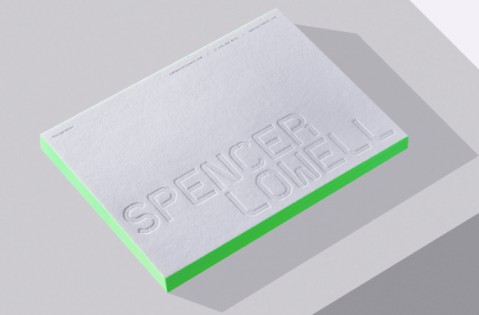5 ESSENTIAL THINGS TO THINK ABOUT BEFORE LAMINATING YOUR PRINT

What is Laminated Printing and How Does It Work?
Laminated printing means your printed items are sealed between two layers of clear plastic, protecting and giving them a shiny finish.
Lamination is used to protect prints from stains and moisture, boost their strength and durability, and enhance the colors with a glossy finish.
If you’re planning a print project that needs lamination, here are five key questions to help you choose the best type of lamination for your needs.
1. What Thickness Fits Your Project?
Lamination film comes in various thicknesses, measured in mils, where one mil equals 0.001 inches. For example, a 1.5 mil laminate is 0.0015 inches thick, while a 10 mil laminate is 0.010 inches thick.
Since your print will be enclosed between two layers of laminate, a 1.5 mil laminate adds 3 mils (0.003 inches) to the total thickness, while a 10 mil laminate adds 20 mils (0.020 inches).
If you want your printed piece to be stiffer, opt for a thicker laminate. However, if your print needs to be folded, it’s better to use laminate that is 3 mil or thinner, as thicker laminates make folding more difficult.
2. Do You Prefer a Gloss or Matte Finish?
Lamination film comes in different sheen levels, and the choice depends on your project and personal preference.
Glossy laminates provide a shiny, glass-like finish that enhances the color and vibrancy of your print. This makes them ideal for promotional materials like presentation folders and displays, as well as book covers and reports.
Matte laminates offer a softer look and reduce glare, making printed information easier to read. They’re a great choice for items like restaurant menus, maps, and the pages of books and manuals.
3. Sealed Edge or Flush Edge?
A sealed edge refers to lamination that extends beyond the edges of the printed piece. This method is ideal for environments where moisture, oil, or other contaminants might be present. By extending the lamination film by 1/8″ to 1/2″, the top and bottom layers of laminate bond around the edges, protecting the print from fluids and dirt.
A flush edge means the lamination is trimmed even with the edge of the printed piece. This option works well for items that won’t be exposed to moisture or heavy dirt or when a clean, sleek look is preferred. It’s commonly used for business cards and the interior pages of books or binders.
4. Should the Corners be Square or Rounded?
The thickness of the laminate film can make printed pieces quite rigid, resulting in sharp 90-degree corners. If the piece will be frequently handled, especially by children, it’s a good idea to round the corners to avoid safety issues.
Rounding the corners not only makes the piece safer but also gives it a polished look. If the laminate is thin and flexible enough, the corners can stay square without posing a safety risk.
5. Are There Any Additional Finishing Operations?
After printing and laminating, laminated materials often undergo additional processes.
For example, inserts for ring binders might need holes punched along the edge. Laminated tags and instructions that hang from products or machines often require holes or eyelets. Laminated items can also be die-cut into special shapes, like custom binder dividers or bookmarks, or scored and folded, such as for menus. Additionally, laminated prints used as erasable memo boards may need magnets or adhesive added to the back.
If you have any additional questions about laminated printing or need help with your project, feel free to reach out to us!
[Laminated Printing, Lamination Types, Glossy vs. Matte Laminating, Sealed vs. Flush Edges, Laminate Thickness, Laminated Print Finishing, Bulk Printing, Offset Printing, Commercial Printing, Printing Partner, Printing Service Provider, Printing Solutions, Printers For Corporates, Professional Printing, One Step Print LLP, Offset printer for bulk Printing, Printer Nearby]








